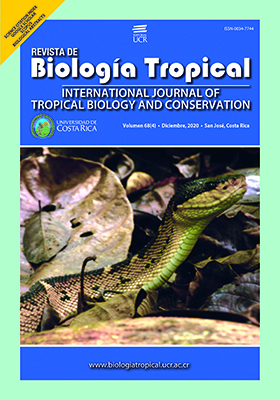Abstract
ABSTRACT: Implementation of an ecological analysis in the framework of water management in three aquatic ecosystems in Colombia. Introduction: Research and diagnosis of water sources is on academic and governmental interest, for this reason, the exploration of numerical instruments applied to watershed management offers the possibility to identify where and what variables are useful in monitoring and rehabilitation programs of aquatic ecosystems. The territories environmental planning and management, which includes water quality, is conventionally analyzed by physico-chemical and hydrobiological indices, in 2014 through the water management guide, included the assessment of the ecological quality index (EQI); this index generates a comprehensive approach through a numerical system of correlations that diagnoses, classifies and detects the affections in a reach of a water system. Objective: This research aims to demonstrate that the index allows to assess the quality of aquatic ecosystems affected by different environmental situations. Methods: In order to analyze the application of this tool, we analyzed three scenarios located in different biogeographical regions of Colombia and as an indicator hydrobiological group we used peripheral and phytoplankton algae. The ecosystems were monitored between 2007 and 2015 and correspond to a flood plain, a high mountain Andean river and a group of ravines in a tropical humid forest. Results: Among the general results, the matrices of response variables determined canonical correlations with (p<0.005) and a model of weighted averages allowed to estimate the optimum and the tolerance of each taxa for the ecological classification of the sites; variables related to ion concentration, acidity damping, temperature and hydraulics, influenced the models that explained the distribution of abundances of the studied biological groups. Conclusions: The application of the index makes it possible to identify variables, organisms and numerical systems that allows to classify ecological status in a system, useful results in the diagnosis and monitoring of aquatic ecosystems studied and that can be implemented with other scenarios.
##plugins.facebook.comentarios##

This work is licensed under a Creative Commons Attribution 4.0 International License.
Copyright (c) 2020 Esnedy Hernández, Diana María Agudelo, Elizabeth Flórez, Robinson Sepúlveda, Ana María Zabala, Lady Vargas, Mateo Parra, Giovanny Ramírez, Néstor Aguirre, Fabio Vélez



